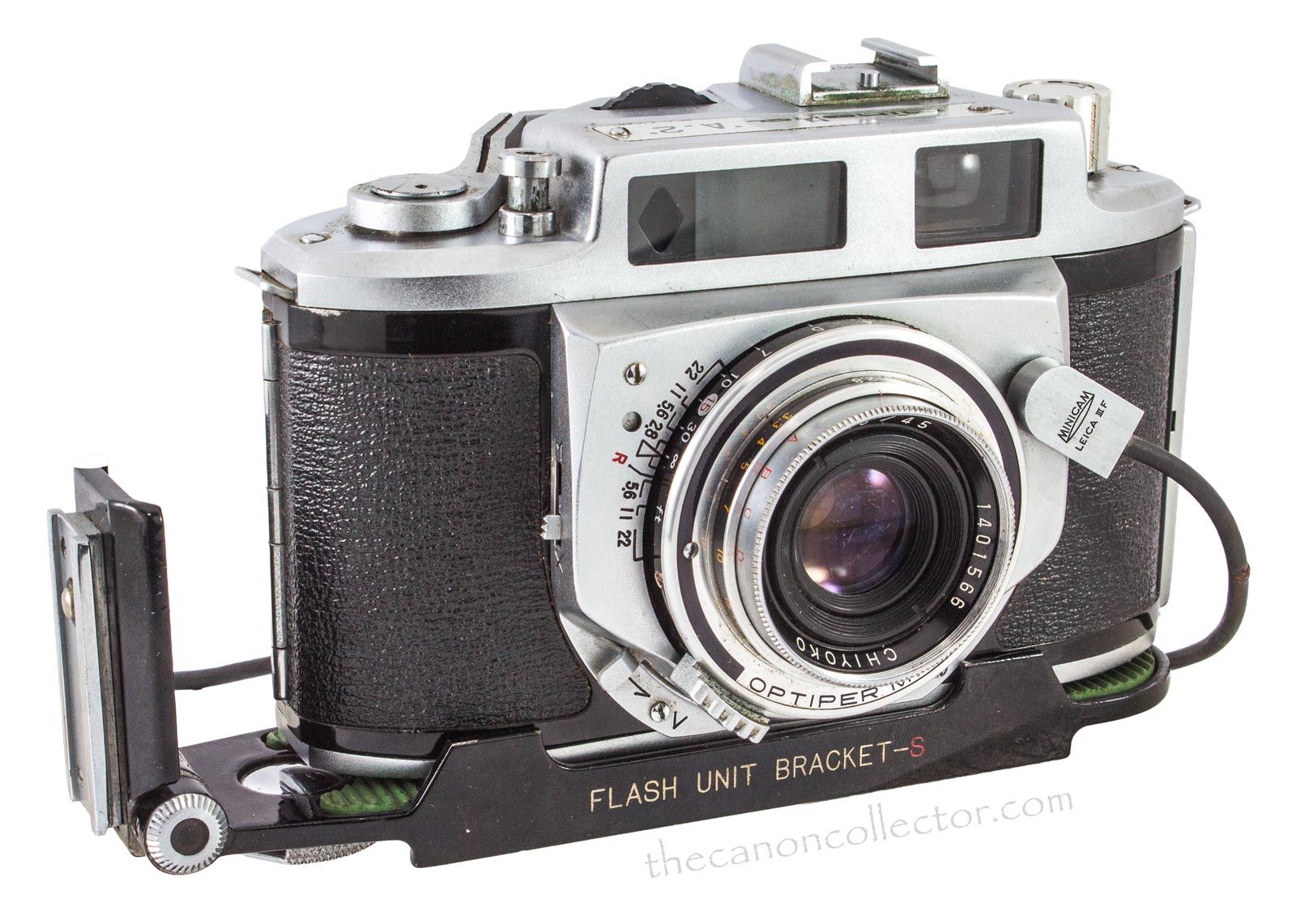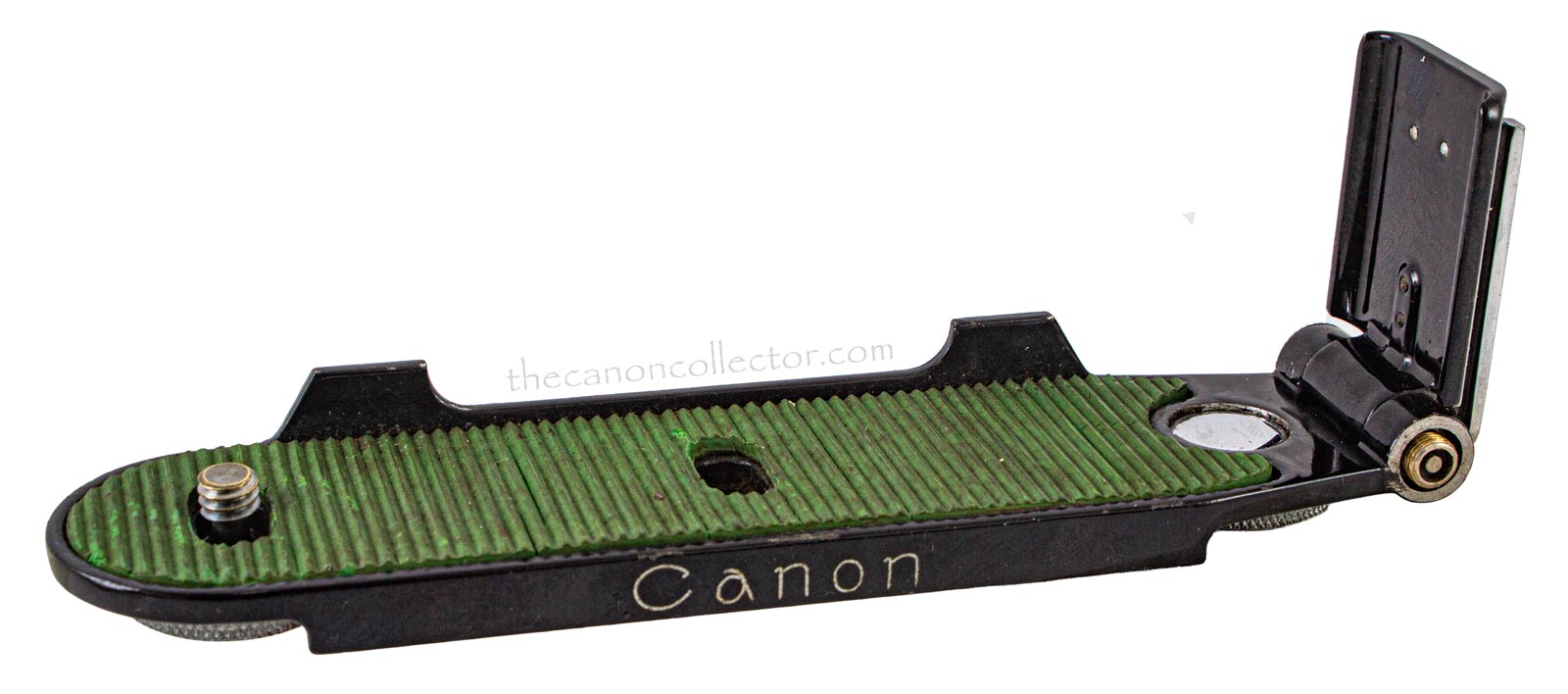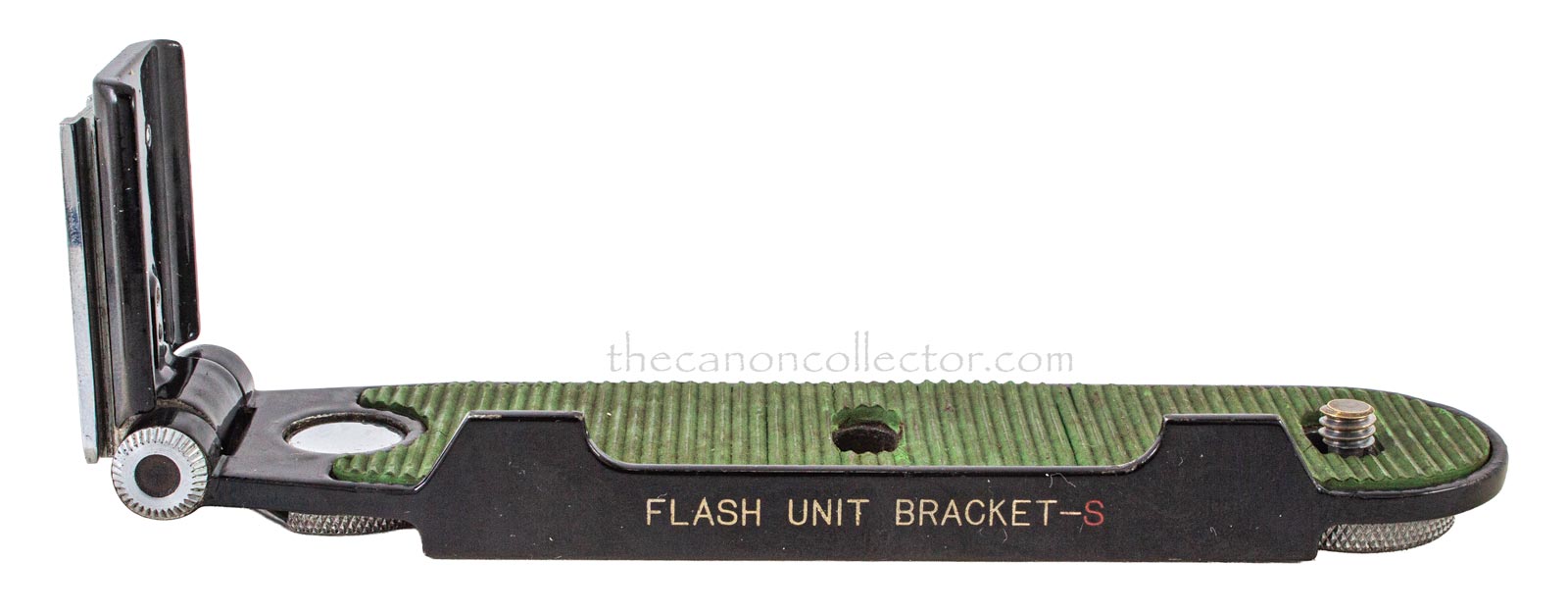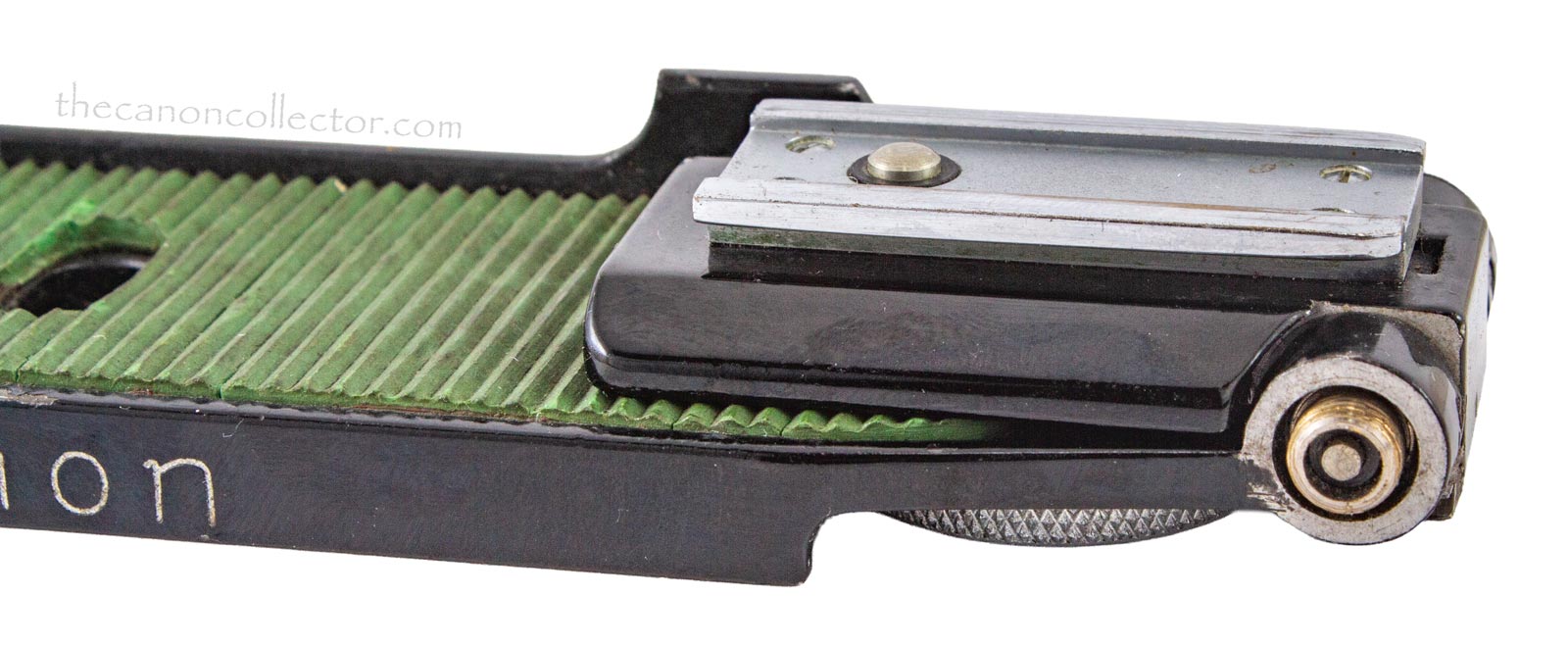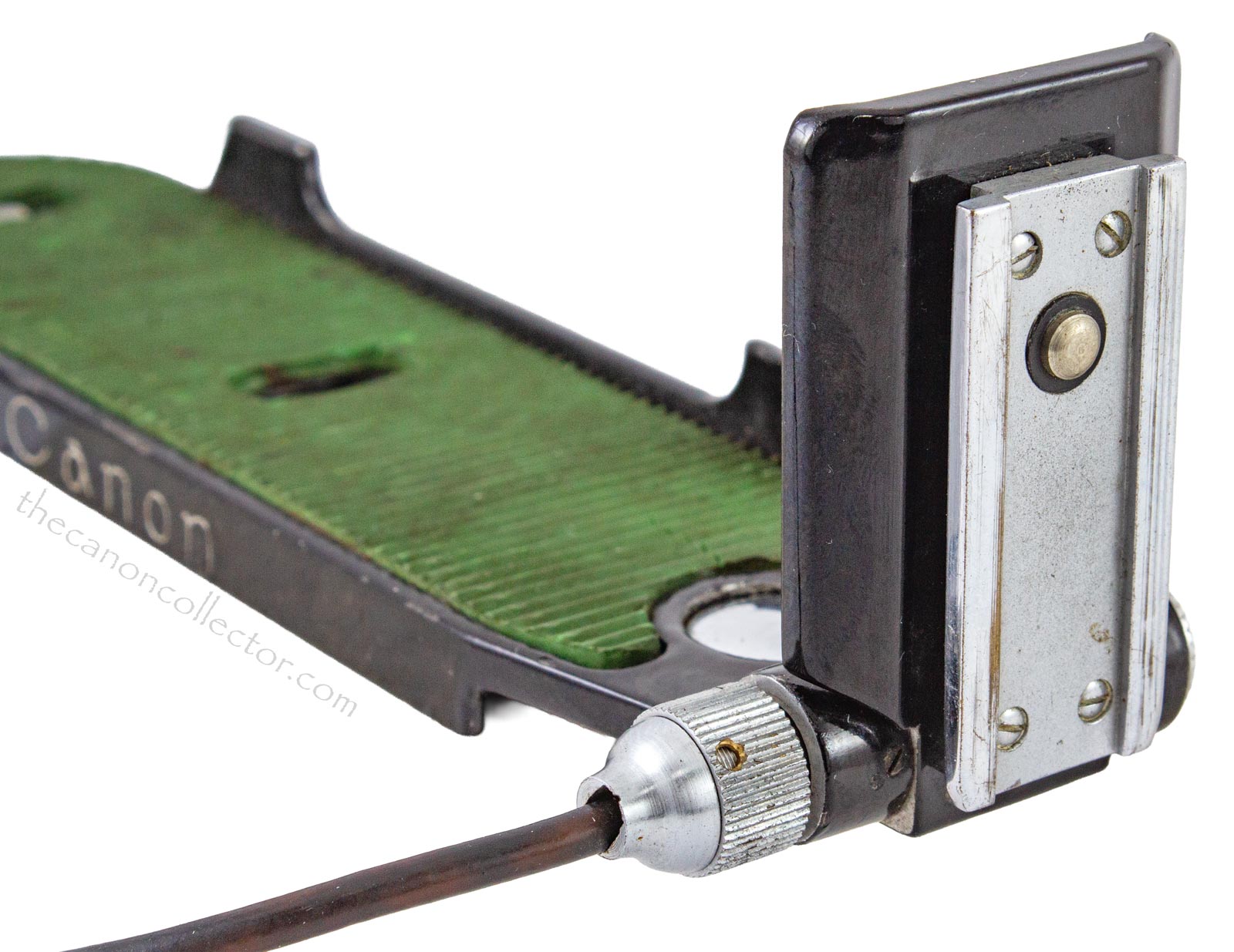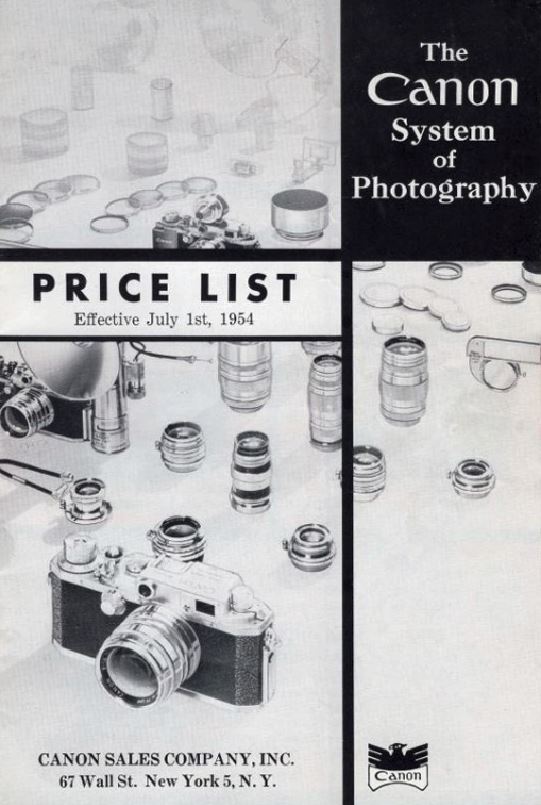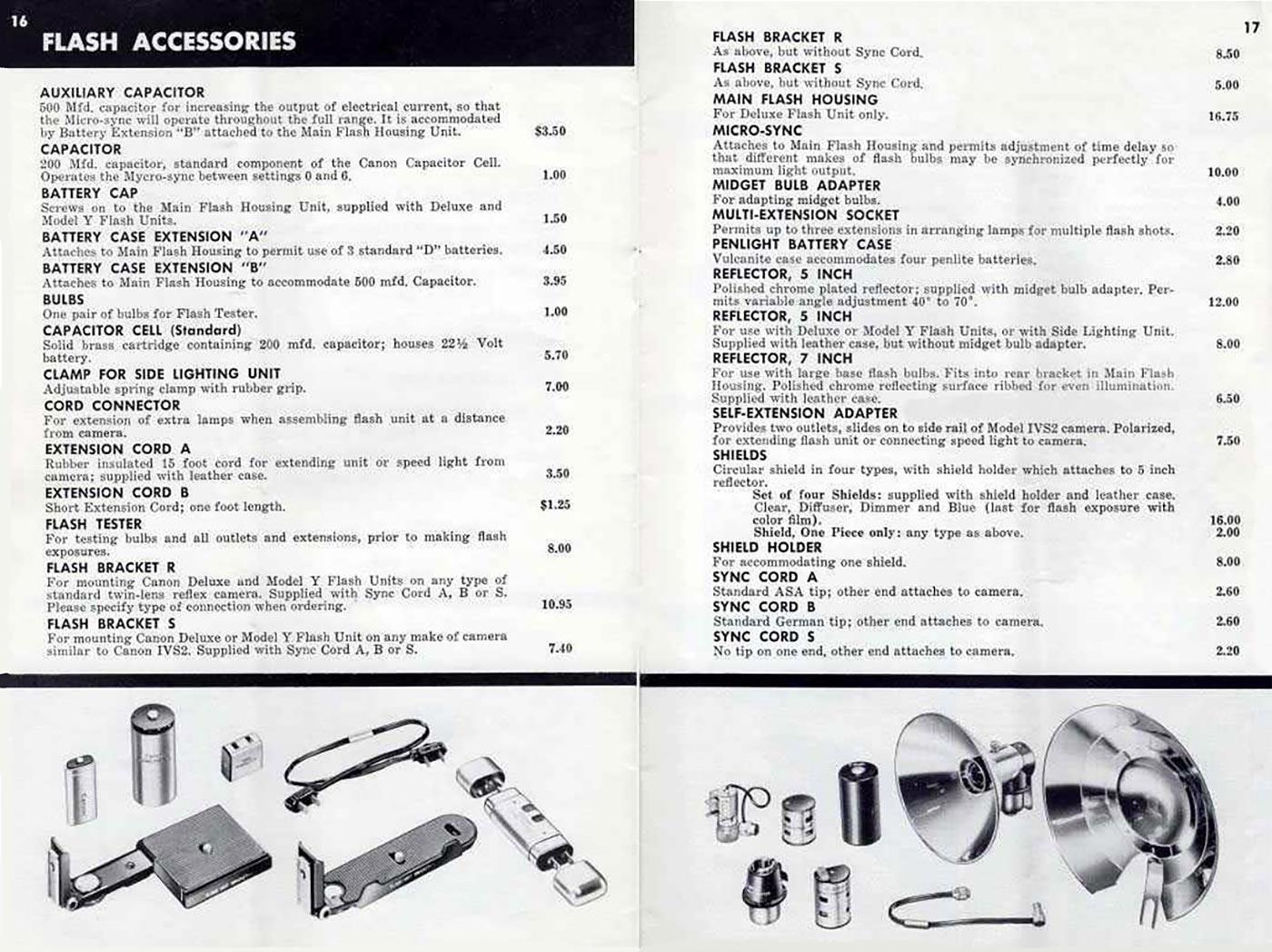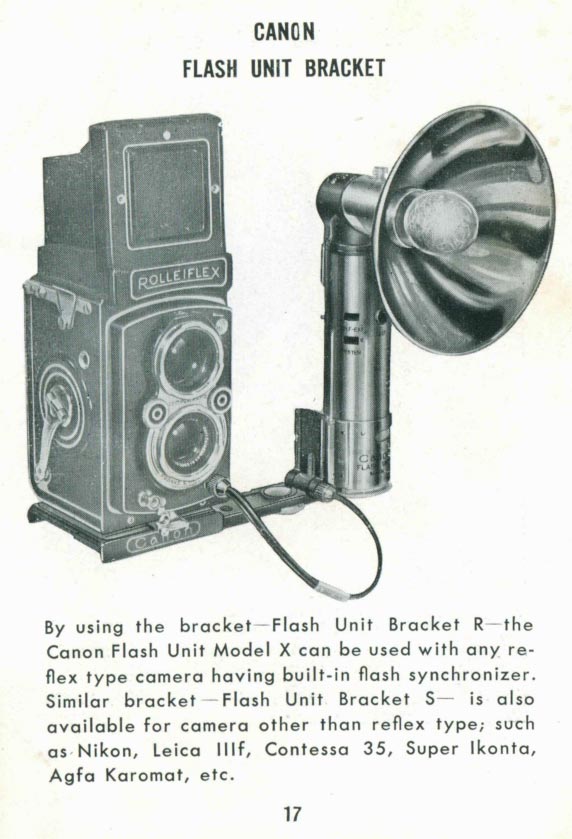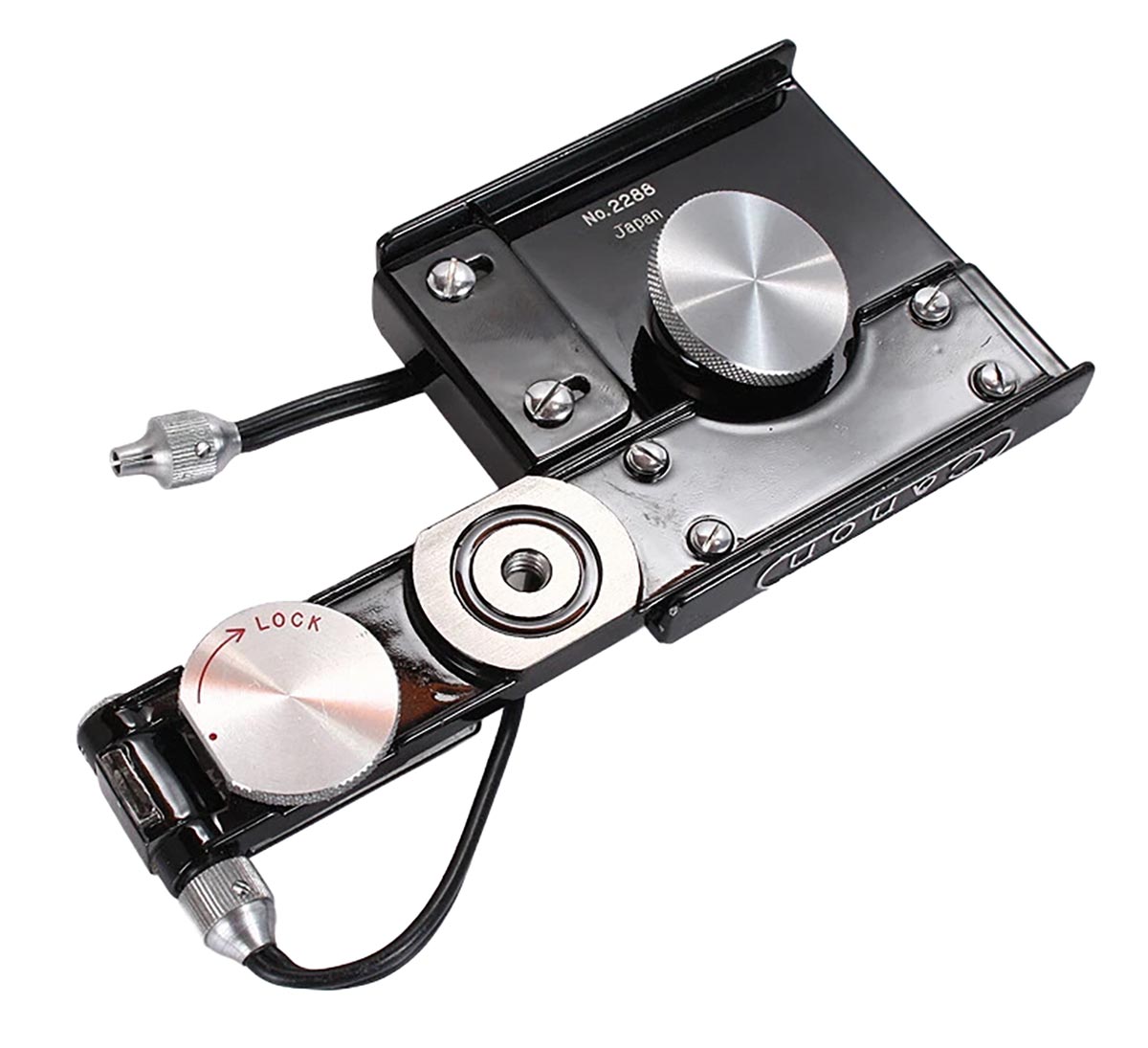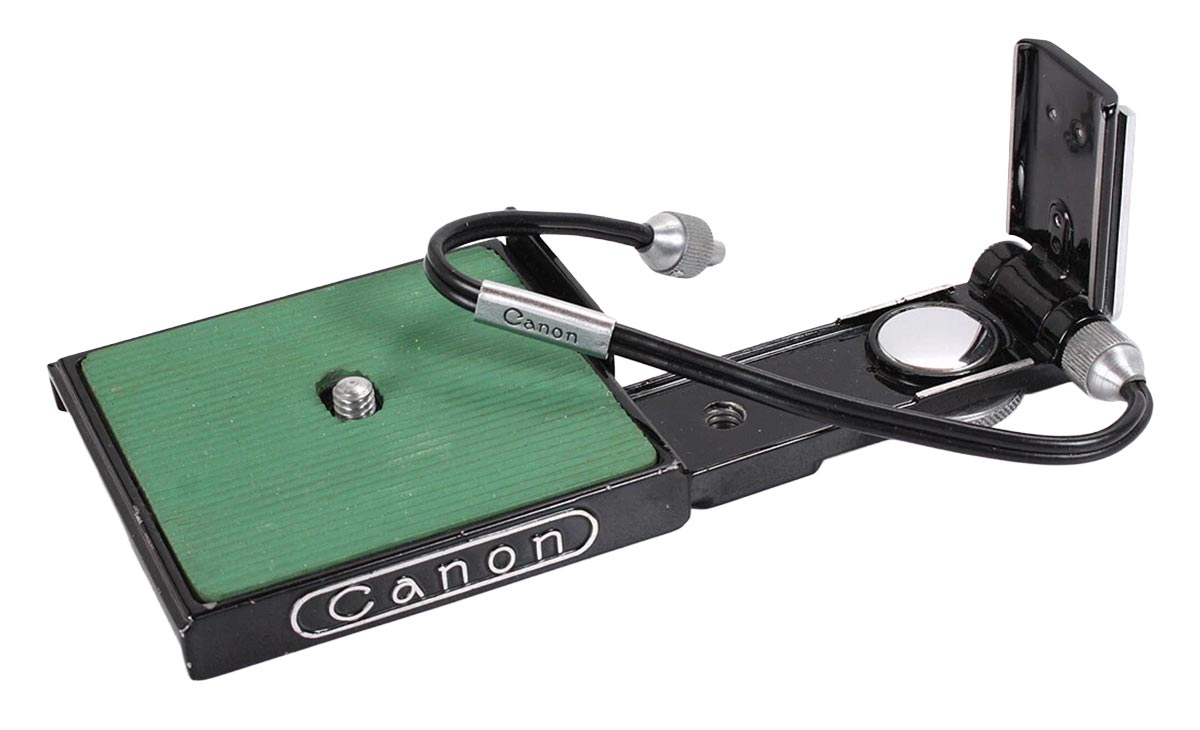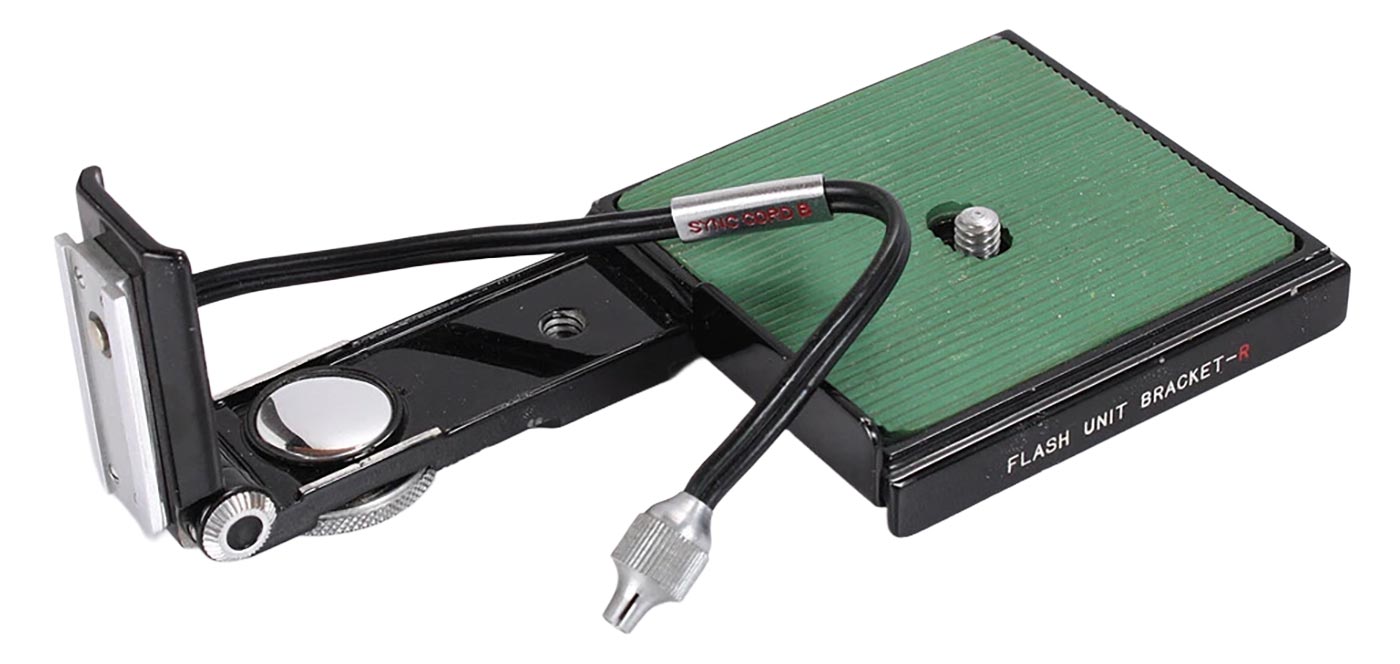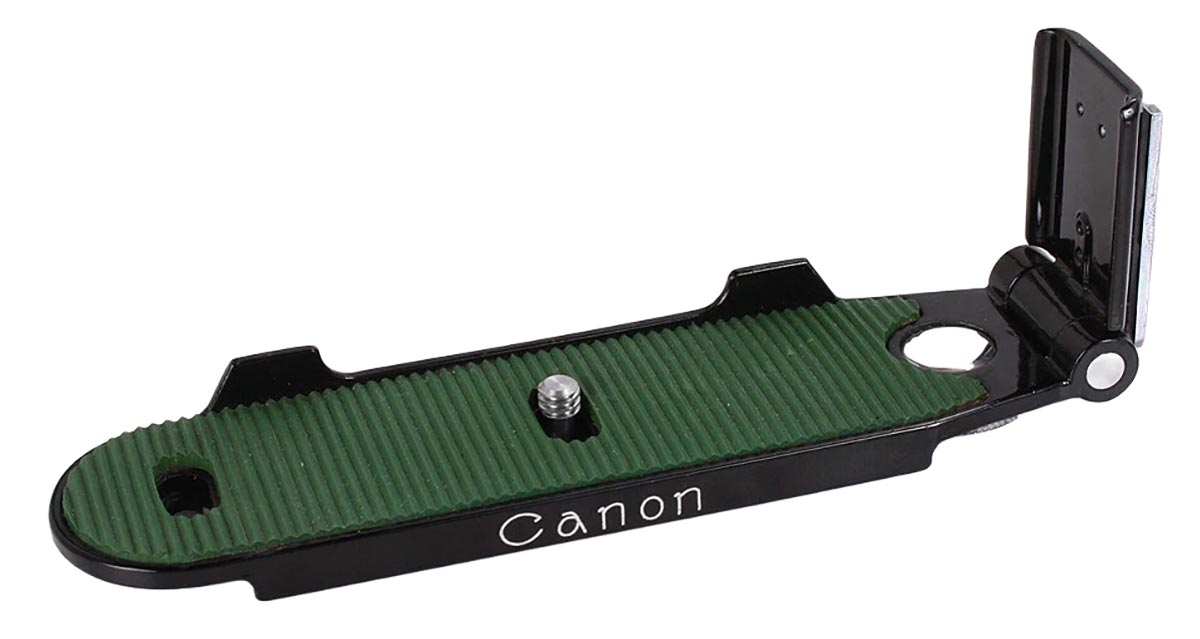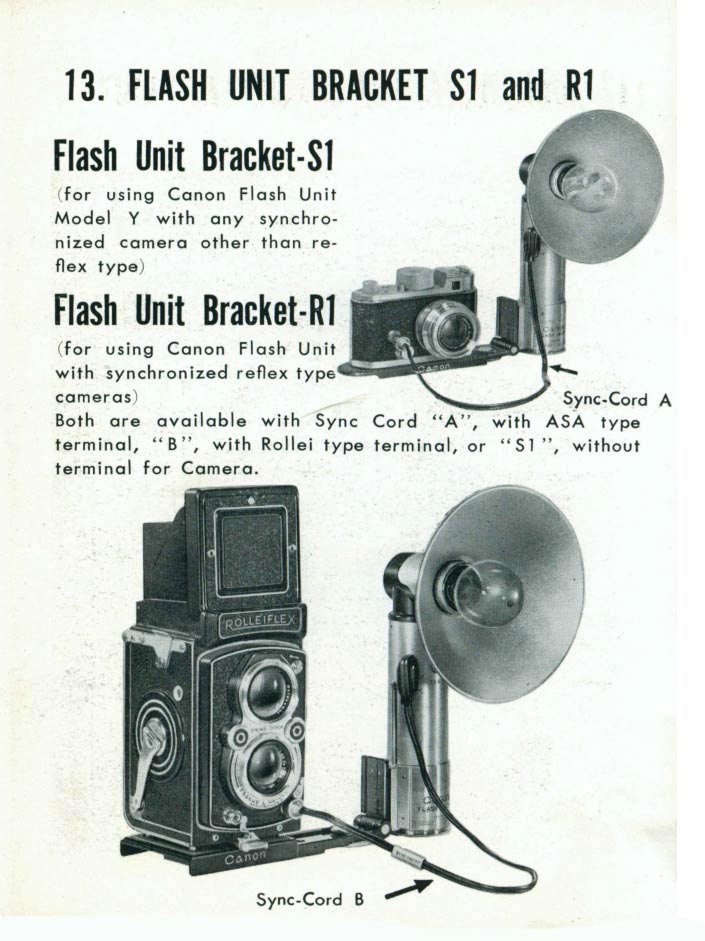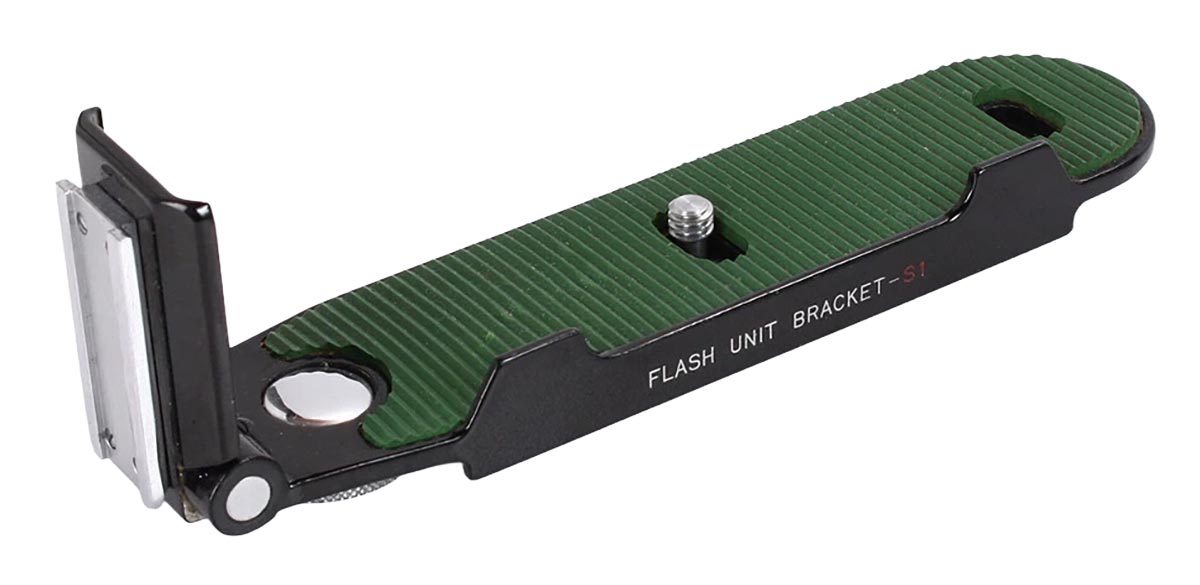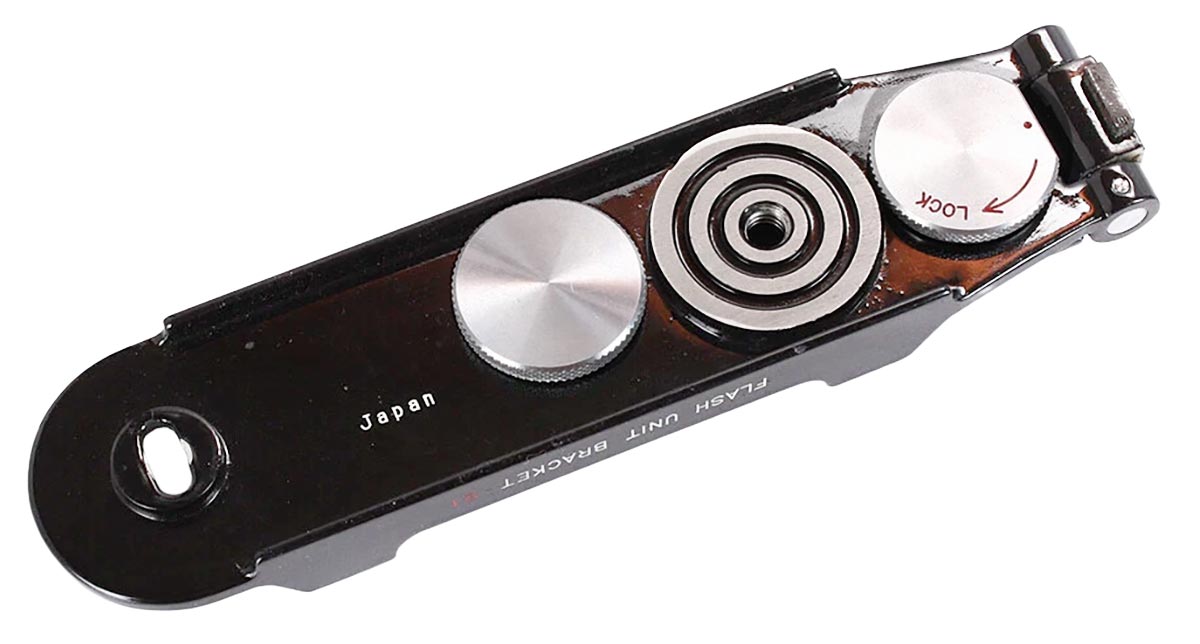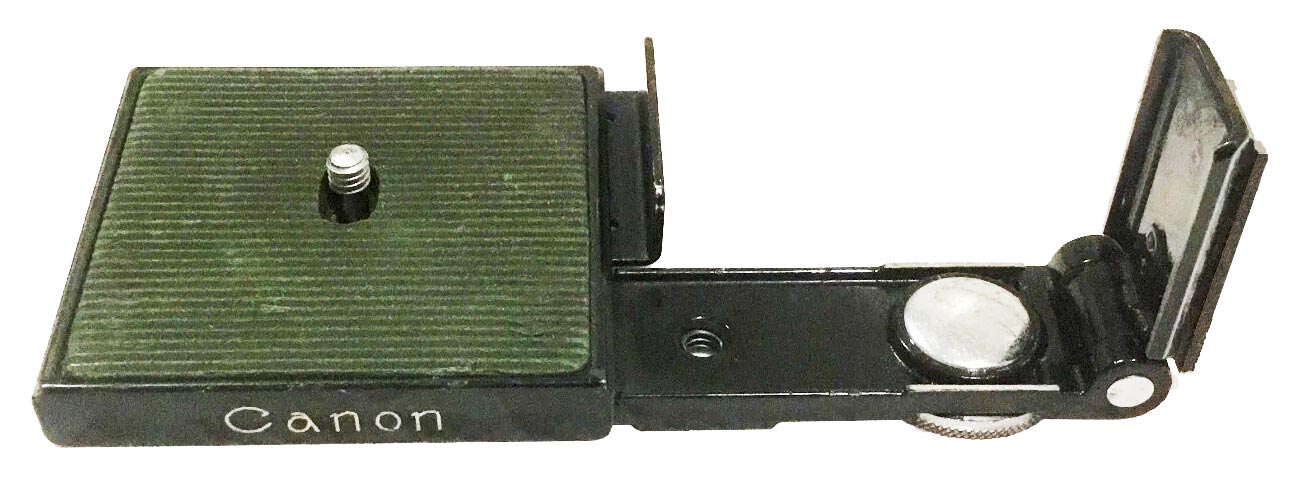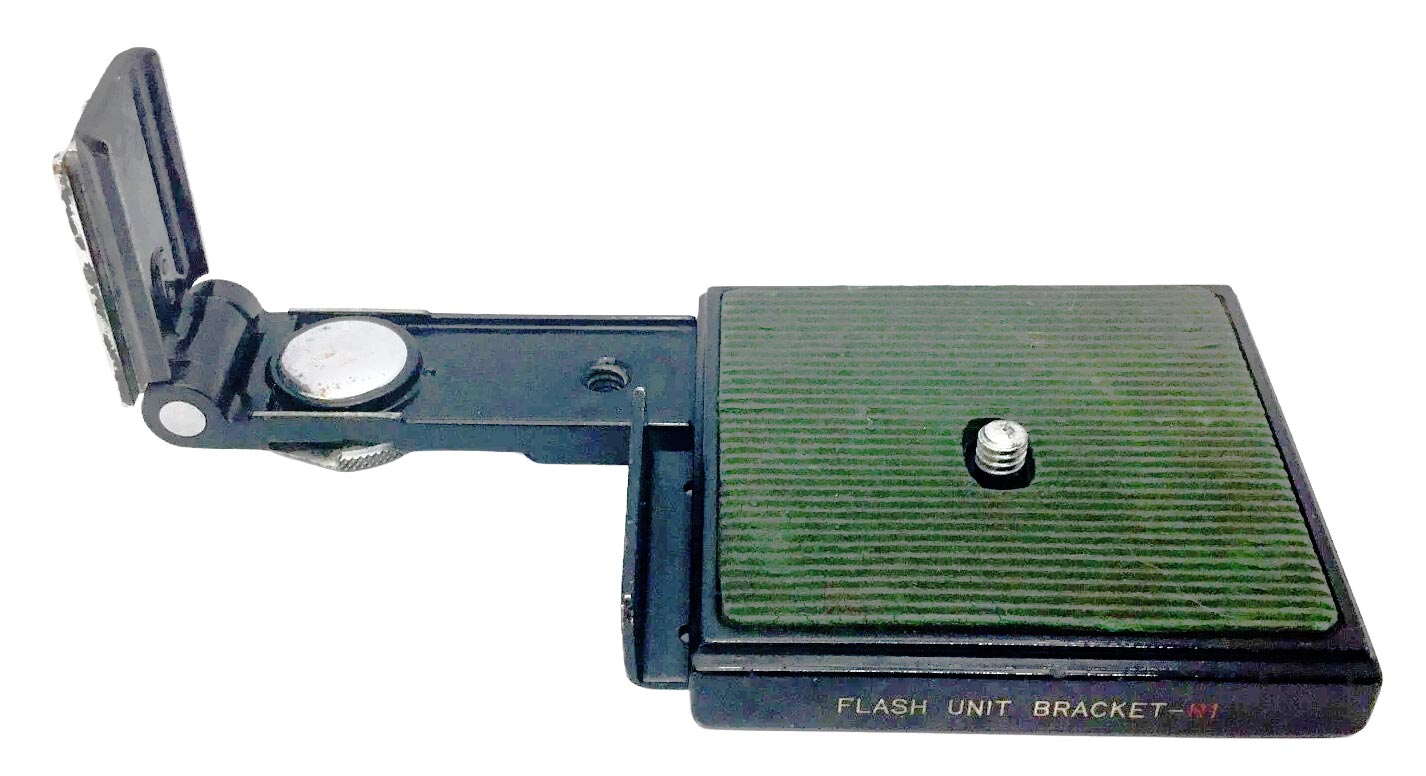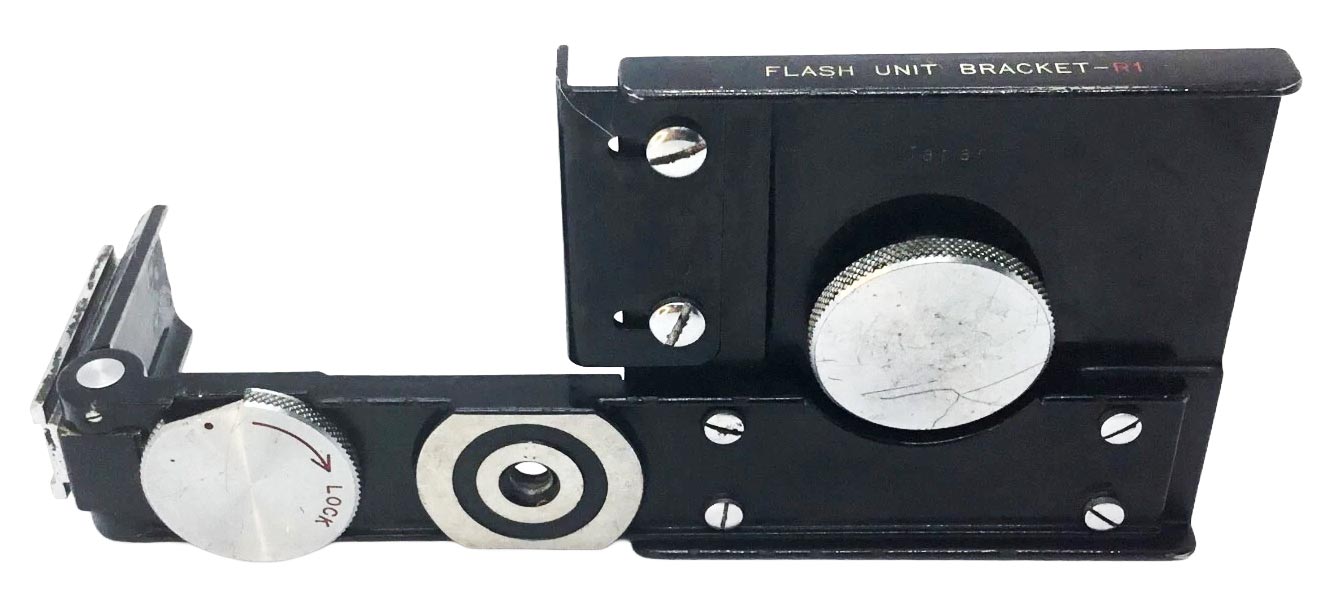This is the Flash Unit Bracket S mounted on a Minolta A2 35mm camera. (The Flash Sync Cable is not by Canon.) This allows Canon Flash Units that use the Canon “Side Rail” to be used on non-Canon cameras.
Canon Flash Unit Brackets
There is always more to learn when you collect something. If not, I think you would eventually become bored. This was brought home to me this past week when I went over to my friend Todd Belcher’s home to see him and talk cameras. And I also got to meet his beautiful wife, Elena.
While I was there Todd showed me a device I did not recognize. It said “Canon” on the front and on the back it said “Flash Unit Bracket-S”. It was obviously a base plate that attached to the bottom of a camera and on one end was a Canon
flash rail as appeared on synchronized Canon rangefinder cameras starting with the Model 1950 in mid 1950. The flash rail was attached to a vertical plate that could be folded down flat on the unit. There was a sync contact in the middle of the Flash Rail and a Screw In Sync Socket on the hinge pin for a Sync Cable.
This is the Flash Unit Bracket that Todd gave me. On the right end (in the picture) is the vertical arm holding the Flash Rail. At the bottom on the hinge of the vertical arm is a Sync Socket for the Flash Sync Cord.
The vertical end piece folds down flush with the bottom for easier storage. The Sync Cord Plug is visible on the end of the hinge pin.
In this picture of the Flash Rail the camera sync connection is plainly seen in the middle of the rail. This is connected to the screw connection on the front of the Bracket which attaches to the camera. So the camera mounted on the Bracket can trigger Canon Flash Units that mount on the standard Canon Flash Rail
Todd and I went through his collection of rangefinder Canons and none of them seemed to fit this bracket. We were at a loss for what this was. He gave it to me to continue my reseach at home which I did as soon as I got there.
None of my rangefinders fit this device. I tried “F” Series and “A” Series cameras as well as the four Canonflex models. Nothing fit. Looking through the cameras on my shelf I came across my Minolta A2, my camera from high school days, and I was able to make it fit by mounting it backwards. I then connected the Sync Cord that came with the Bracket to the bracket and the camera. With this done I had a Minolta A2 that could make use of Canon Flash Units such as the Model “X” or “Y” and synchronize them through the rail on the Bracket.
I next turned to searching through my Manuals and Catalogues (all of which you can find in the Library) and in a Price List for 1 July 1954 I found what I was looking for. On pages 16 1nd 17 was a listing of Flash Accessories and there was the Flash Bracket S. The picture was the one I have. And I found there was also a Flash Bracket R. The Price List says:
“Flash Bracket S For mounting Canon Delux or Model Y Flash Unit on any make of camera similar to Canon IVS2. Supplied with Sunc Cord A, B, or S.”
“Flash Bracket R For mounting Canon Delux and Model Y Flash Units on any type of standard twin-lens reflex camera.
Page 17 from the User Manual for the Canon Flash Unit Model X.
On the bottom of the
Bracket R, from left to right
(in the photo) is the Flash Rail
Lock, the Tripod Mount, and
the Attachment Screw on the right.
Then in my Canon Flash Unit Model X User Manual I found on page 17 a photograph of the Flash Unit Bracket R with a TLR camera mounted on it. The text says that the Model X can be used on any TLR with internal synchronization. It then goes on to say “Flash Unit Bracket S is also available for cameras other than reflex types; such as Nikon, Leica IIIf, Contessa 35, Super Ikonta, Agfa Karomat, etc.” That is why none of our Canon cameras would fit on our Bracket S. It was not made for Canon cameras.
I found good pictures of the Bracket R on Ebay
in a listing by Pacific Rim Camera.
This is the Flash Unit Bracket R
as shown on page 17 on the left. The vertical
plate with the Flash Rail on this Bracket folds down or
locks in the vertical position. Flash sync is through the Flash Rail.
In this image of the Flash Unit Bracket R, seen from the back, the Sync Contact can be seen in the center of the Flash Rail.
But wait! There is more. In my reading I found that there were also Flash Unit Brackets S1 and R1. These are easy to explain. They are identical to the Brackets S and R without the flash sync through the Flash Rail. Some Flash Units can be triggered directly from the camera and so the Bracket internal circuitry is not required. And this makes production less expensive.
The Brackets S and R can use all Flash Units that mount on the Flash Rail but any Flash Unit that synchronizes through the Flash Unit Rail will not function in the Bracket R1 or S1.
On page 30 of the User Manual for the Canon Flash Unit Model Y Brackets R1 and S1 are illustrated and described. You can see that the Sync Cord does not connect to the Bracket. It goes from the Flash Unit direct to the camera.
Again, I resorted to images from another Pacific Rim listing to illustrate the Flash Unit Bracket S1. It is exactly the same as the Bracket S except you can see there is no Sync Cord Connection on the hinge pin. The same goes for the Bracket R1. It is the same but lacks the sync connection.
Looking at the front of the Bracket S1 you can see that there is no Flash Sync Cord Connection on the hinge of the Vertical Flash Rail. Otherwise, it is identical to the Bracket S.
The Bracket S1
from the back is the same
as the Bracket S. You can see there
is no flash contact in the center of the Flash Rail.
To complete our look at the four Flash Unit Brackets we have the Bracket R1 which is identical to the Bracket R except that it has no sync contact in the Flash Rail and no connection for a Flash Sync Cord. (These picture are from the Ebay listing of vendor CSWE)
And that is the Flash Unit Bracket. These were not copied from Leitz. The Leica always used the accessory shoe that we still use today so there was no need for these devices. Canon created them because they had the Flash Rail which was a non-standard item unique to Canon. So an adapter was necessary for cameras without the rail.
Canon’s Flash Unit Brackets were made for non-Canon cameras presumably so that Canon could sell more flash units. However, I think it was more than that. These Brackets made the Canon system more versatile for users who had a variety of cameras. They were intended to boost the sophistication of the Canon System of Photography.
This website is the work of R. Flynn Marr who is solely responsible for its contents which are subject to his claim of copyright. User Manuals, Brochures and Advertising Materials of Canon and other manufacturers available on this site are subject to the copyright claims and are the property of Canon and other manufacturers and they are offered here for personal use only. Use of this website is governed by the Terms of Service set out on the page by that name.

The True North Strong and Free

